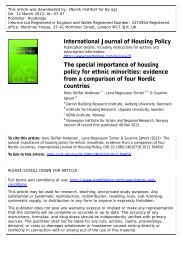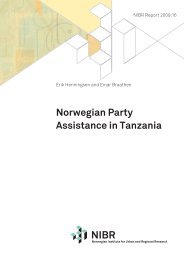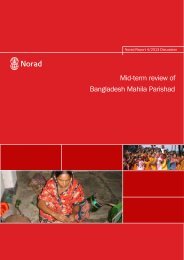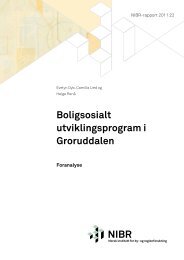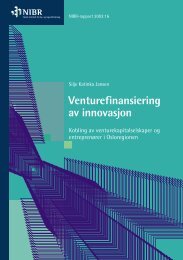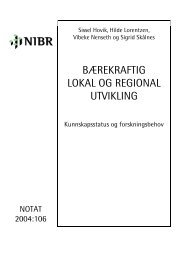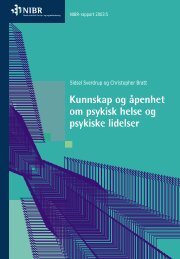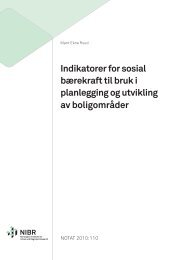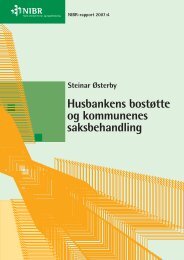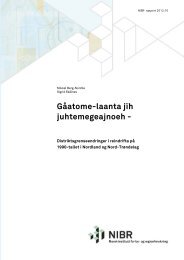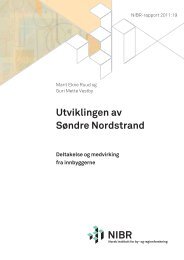Forvaltningsmuseenes og NIKUs ansvar og roller i forvaltningen av ...
Forvaltningsmuseenes og NIKUs ansvar og roller i forvaltningen av ...
Forvaltningsmuseenes og NIKUs ansvar og roller i forvaltningen av ...
- No tags were found...
You also want an ePaper? Increase the reach of your titles
YUMPU automatically turns print PDFs into web optimized ePapers that Google loves.
18knowledge is by involving the universities’ research expertise. It isseen as a guarantee for knowledge-based pr<strong>og</strong>ress.Tight operating parametersThe regulatory environment is intended to give the administrativemuseums and NIKU the ability to oversee the management ofautomatically listed cultural artefacts in Norway in an efficient andequitable manner. In this study we focus in particular oninstitutional structure, staffing and funding as the three importantconstituents of the environment within which administrativemuseums and NIKU operate. These factors should not, however,be seen in isolation. Institutional affiliation puts constraints on thefinancial basis which in turn affects the staffing and competencesituation.What primarily distinguishes the eight administrative museums andNIKU in these areas is their wide diversity. The same can be saidof the five university museums internally, as well as the threemaritime museums which internally are organized as trusts.As a rule, institutional affiliation appears to be of primaryimportance when it comes to the terms under which theadministrative museums and NIKU operate. This is particularlythe case in relation to the execution of the many additionalcapacities which augment and expand their administrative duties.We are thinking here of capacities such as artefact management,conservation, research and outreach work. The funding of thesecapacities is defined more in terms of the universities’ socialresponsibility, and for that reason funding is taken from theuniversity museums’ basic allocation which in turn is taken fromthe universities’ basic allocation, responsibility for which lies withthe Ministry of Education and Research. Similarly, the maritimemuseums, as independent trusts, use their basic allocations fromthe Ministry of Culture to finance capacities which complement oraugment their administrative responsibilities. The resources thusmade <strong>av</strong>ailable to the university and independent maritimemuseums define the degree to which these additional capacitiesreceiving funding. As far as our study was able to detect, theuniversity museums appear to keep these capacities afloat largelyby taking from the basic allocation. Conversely, in the case of themaritime museums, the basic allocation according to ourinformants is too small to fund these additional capacities.NIBR-rapport 2012:30



